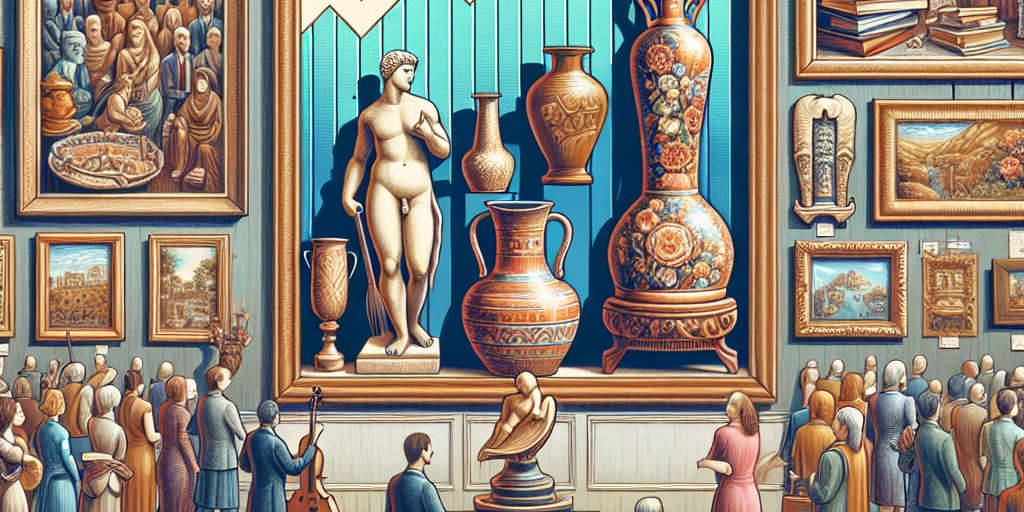Diversifying Investment Portfolios: The Art of Investing in Various Art Forms
In today’s dynamic financial landscape, investors continually seek innovative avenues to diversify their portfolios beyond the traditional stocks, bonds, and real estate. Among the emerging opportunities is the world of art—an investment class that fuses creativity with monetary growth potential. This article explores the art of investing in various art forms, presenting a compelling case for why investors should consider adding this asset class to their portfolios.
The Alluring World of Art Investment
Art has been a repository of value and status throughout history. From Renaissance masterpieces to contemporary digital art, the market for art is as varied as it is intriguing. Art investment isn’t merely about acquiring a beautiful masterpiece; it’s an opportunity to own a tangible asset that may appreciate over time while enhancing one’s cultural cachet.
Types of Art Investment Opportunities
Investors in the art market have a plethora of choices, each offering unique benefits and risks:
-
Traditional Fine Art: Paintings and sculptures by renowned artists often top the list for investors. Historically, works by masters like Picasso, Monet, and Van Gogh have yielded significant returns, although access to such works typically requires substantial capital.
-
Contemporary Art: This category, covering artists from the late 20th century to today, can be more accessible and often more volatile. However, emerging artists can offer lucrative opportunities for early investors who spot potential before prices soar.
-
Photography: As a form of art, photography is increasingly recognized for its aesthetic and historical value. Limited edition prints by celebrated photographers can serve as relatively lower-entry points for investors.
-
Digital Art and NFTs: The advent of blockchain technology has introduced Non-Fungible Tokens (NFTs), revolutionizing how digital art is bought and sold. These digital collectibles have attracted a new generation of tech-savvy investors, although the market can be speculative.
- Public Art: Investing in initiatives that commission and maintain public art installations can diversify portfolios while contributing to community development and engagement.
Benefits of Art Investment
-
Diversification: Art provides a diversification benefit as its value often exhibits low correlation with traditional financial markets, offering a hedge against volatility.
-
Tangible Asset: Unlike stocks or bonds, art is a tangible asset that investors can enjoy and display, adding an emotional return alongside financial potential.
- Cultural Value: Investing in art supports cultural preservation and promotes artists and creative sectors, aligning financial interests with social impact.
Risks and Considerations
Despite its allure, art investment is not without risks. The market can be opaque, with valuations influenced by trends, rarity, and condition. Additionally, art is an illiquid asset, potentially requiring extended periods to sell at desired valuations. Due diligence is essential, and enlisting the expertise of art advisors or utilizing platforms that verify provenance and authenticity can mitigate some risks.
Building an Art Investment Portfolio
For those interested in exploring art as an investment, several strategies can enhance success:
-
Research and Education: Understand market trends, artists, and the type of art that aligns with both personal interest and investment goals. Visiting galleries, auctions, and art fairs is invaluable.
-
Start Small: Test the waters with limited edition prints or lower-cost works by emerging artists.
-
Long-term Perspective: Art investments are often long-term. Patience is key to realizing potential appreciation.
- Diversify Within Art: Just as in any portfolio, diversify within the art holdings across mediums, time periods, and artists to spread risk.
Conclusion
Incorporating art into an investment portfolio requires an appreciation of both the aesthetic and financial dimensions. While it involves unique risks and requires distinct strategies, the potential rewards—both financial and cultural—make art investment an enticing frontier for modern investors seeking diversification. Whether driven by a passion for creativity or the lure of returns, investing in art forms embraces the true art of portfolio diversification.







